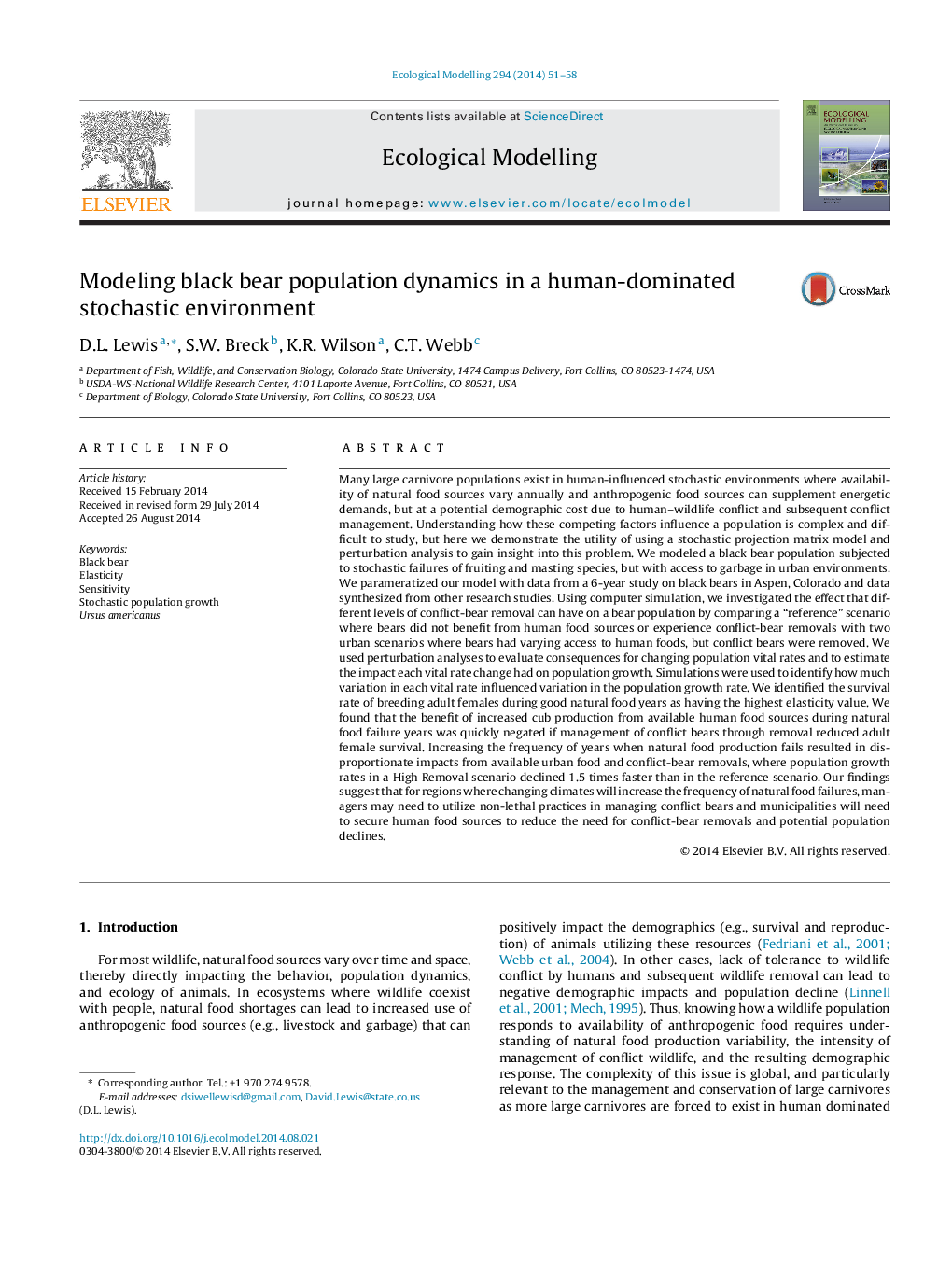| Article ID | Journal | Published Year | Pages | File Type |
|---|---|---|---|---|
| 6296697 | Ecological Modelling | 2014 | 8 Pages |
Abstract
Many large carnivore populations exist in human-influenced stochastic environments where availability of natural food sources vary annually and anthropogenic food sources can supplement energetic demands, but at a potential demographic cost due to human-wildlife conflict and subsequent conflict management. Understanding how these competing factors influence a population is complex and difficult to study, but here we demonstrate the utility of using a stochastic projection matrix model and perturbation analysis to gain insight into this problem. We modeled a black bear population subjected to stochastic failures of fruiting and masting species, but with access to garbage in urban environments. We parameratized our model with data from a 6-year study on black bears in Aspen, Colorado and data synthesized from other research studies. Using computer simulation, we investigated the effect that different levels of conflict-bear removal can have on a bear population by comparing a “reference” scenario where bears did not benefit from human food sources or experience conflict-bear removals with two urban scenarios where bears had varying access to human foods, but conflict bears were removed. We used perturbation analyses to evaluate consequences for changing population vital rates and to estimate the impact each vital rate change had on population growth. Simulations were used to identify how much variation in each vital rate influenced variation in the population growth rate. We identified the survival rate of breeding adult females during good natural food years as having the highest elasticity value. We found that the benefit of increased cub production from available human food sources during natural food failure years was quickly negated if management of conflict bears through removal reduced adult female survival. Increasing the frequency of years when natural food production fails resulted in disproportionate impacts from available urban food and conflict-bear removals, where population growth rates in a High Removal scenario declined 1.5 times faster than in the reference scenario. Our findings suggest that for regions where changing climates will increase the frequency of natural food failures, managers may need to utilize non-lethal practices in managing conflict bears and municipalities will need to secure human food sources to reduce the need for conflict-bear removals and potential population declines.
Related Topics
Life Sciences
Agricultural and Biological Sciences
Ecology, Evolution, Behavior and Systematics
Authors
D.L. Lewis, S.W. Breck, K.R. Wilson, C.T. Webb,
